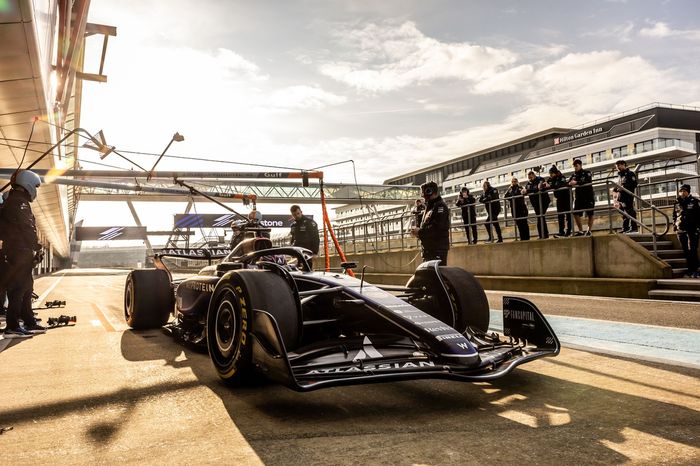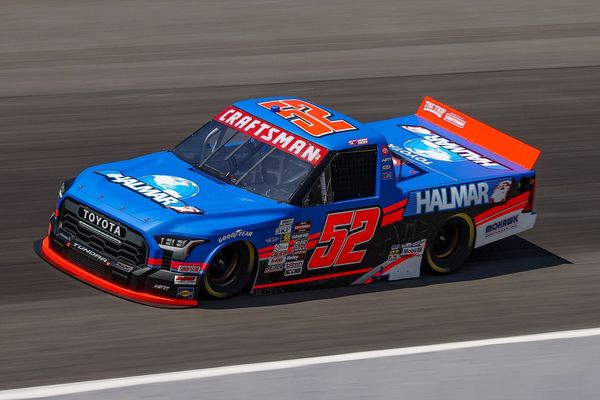
It was a moment that caused jaws to drop aplenty in the 2024 Formula 1 season: Williams team boss James Vowles revealing he’d discovered his then still-fairly-new squad was using a single, gigantic, Microsoft Excel spreadsheet to itemise its entire car build package.
The list ran to multiple thousands of cell entries – an approximate figure of 20,000 was at one stage mentioned – on a single document. It stunned Vowles when he first clapped eyes on it in 2023.
After all, it was a very far cry from the state of the art, purpose built, software systems he’d been used to working with at ex-employer Mercedes, as it churned out title-winner, after title-winner across the previous decade.
Such a discovery formed part of the Briton’s crusade in 2023 – his first as Williams team principal – to get CapEx infrastructure spending such systems fall under out of the F1 cost cap. This was a central pillar to his plan to turnaround Williams’s results.
Vowles opted to reveal the spreadsheet’s existence at the Bahrain season opener last year.
This was done to explain why the squad that’d been semi-regular points scorers in 2023 suddenly only had the pace to score once in the first 10 races of 2024 and why the team was dealing with a parts production problem.
Last year’s FW46 did not get a shakedown before pre-season testing and was later revealed to be overweight to the tune of 0.45s a lap in its initial specification. This eventually came down as the team’s upgrade plan kicked in.

The added weight was caused by many of the FW46’s parts having to initially be made using heavier metal than usually would have been the case with carbon fibre – because Vowles’ plan to go from relying on a spreadsheet that was time-consuming skimming through alone, to using the modern systems long in place at other squads meant everything took a lot longer to produce.
Those metal parts then came with added, and even more painful, costs for Williams in 2024.
Not only was the extra weight a factor in the crashes Alex Albon and his then team-mate Logan Sargeant encountered early on in Australia and Japan last year, the hefty metal parts were at times breaking chassis tubs during impacts and so enforcing added repairs and replacements – all of which had further cost cap effects.
But this time around, Williams’s new 2025 challenger – the FW47 – has been built in time for the squad to host a Silverstone shakedown attended by team partners, fans and the F1 press corps.
And, more importantly, the FW47 starts off life already at the 798kg minimum car weight limit.
When Autosport asked new Williams recruit Carlos Sainz on Friday what the team was telling him about the current car build compared to 2024, he said it’d been “night and day” different - and better.
Autosport had already quizzed Vowles about the upgrade production systems, which he revelled in first replying: “We don’t use an Excel spreadsheet!”

“The big change is we are using modern day tools that are the benchmark for what we need to be doing,” Vowles added.
“Basically, what we call ERP (Enterprise Resource Planning), MRP (Material Requirements Planning), PLM (Product Lifecycle Management) – the systems used to know what parts you have, where they are, and what the materials you have [for them], etc.
“We're using benchmark systems [now]. There's still work to do, because once you introduce that, there's an amount of pain that comes with it.
“So, we're not firing on all cylinders yet, but that will happen across the course of 2025.
“To answer your question, you simply can't [have it as it was before] – almost using humans having to understand where every bit is in order to make the car.
“We’re relying now on process and structure. You always get a little bit of pain when you're doing that [going through the process of modernising these systems] and the car next door is a testament to where we’re going.”
What Williams now has to replace the infamous spreadsheet is in effect a digital map of the FW47’s entire architecture.

Within this – which one senior team insider described to Autosport as an arrangement in a hierarchical system for every part – the map can be quickly accessed and traversed.
Each part on the FW47 can now be visualised individually, as well as fully represented on screen, and then the parts and materials needed to be built can be itemised and categorised in depth.
The PLM element means the system can also quickly log how long all parts have been used on the car and therefore when each part is approaching the end of its lifespan.
But perhaps the most important element for Williams as 2025 pre-season testing approaches is that, having gone through its 2024 car build pain, this time around it has produced a challenger with which it already seems quietly confident.
“A good car,” as Albon put it, when Autosport asked what his first impressions had been of the design on-screen. “It’s an evolution, as you can see.
“Really impressed with the packaging of the car. I think that’s been really well done.
“I think the quality in general, if you look at the quality of the parts, has been a really great job from everyone at the factory. There’s been a step-up in that sense.”
Night and day indeed.
































